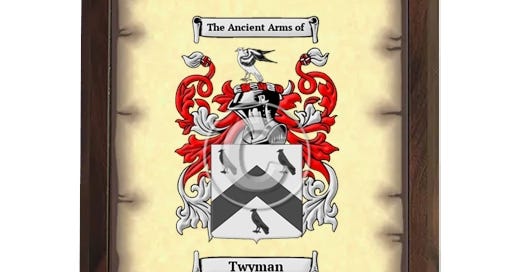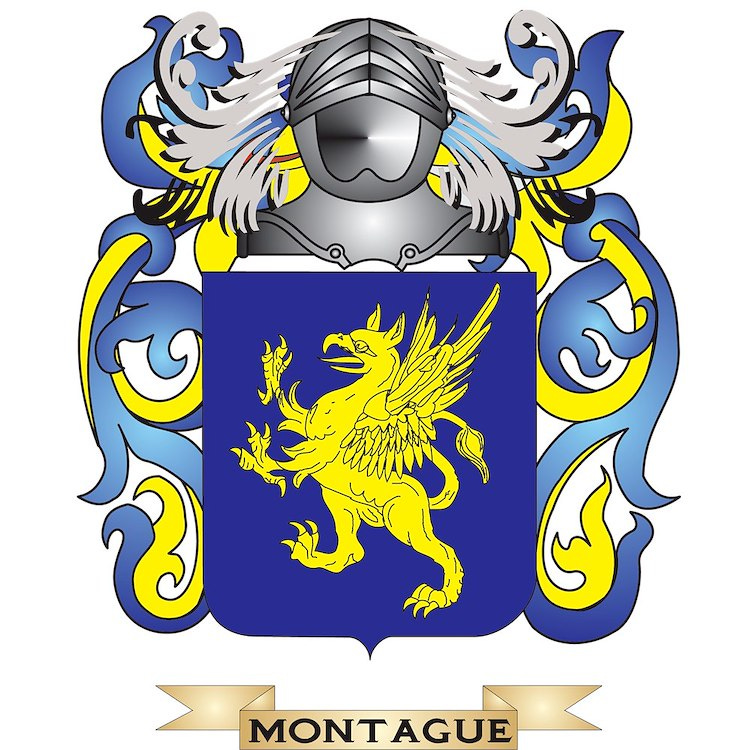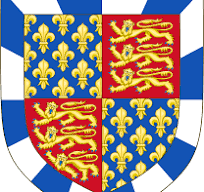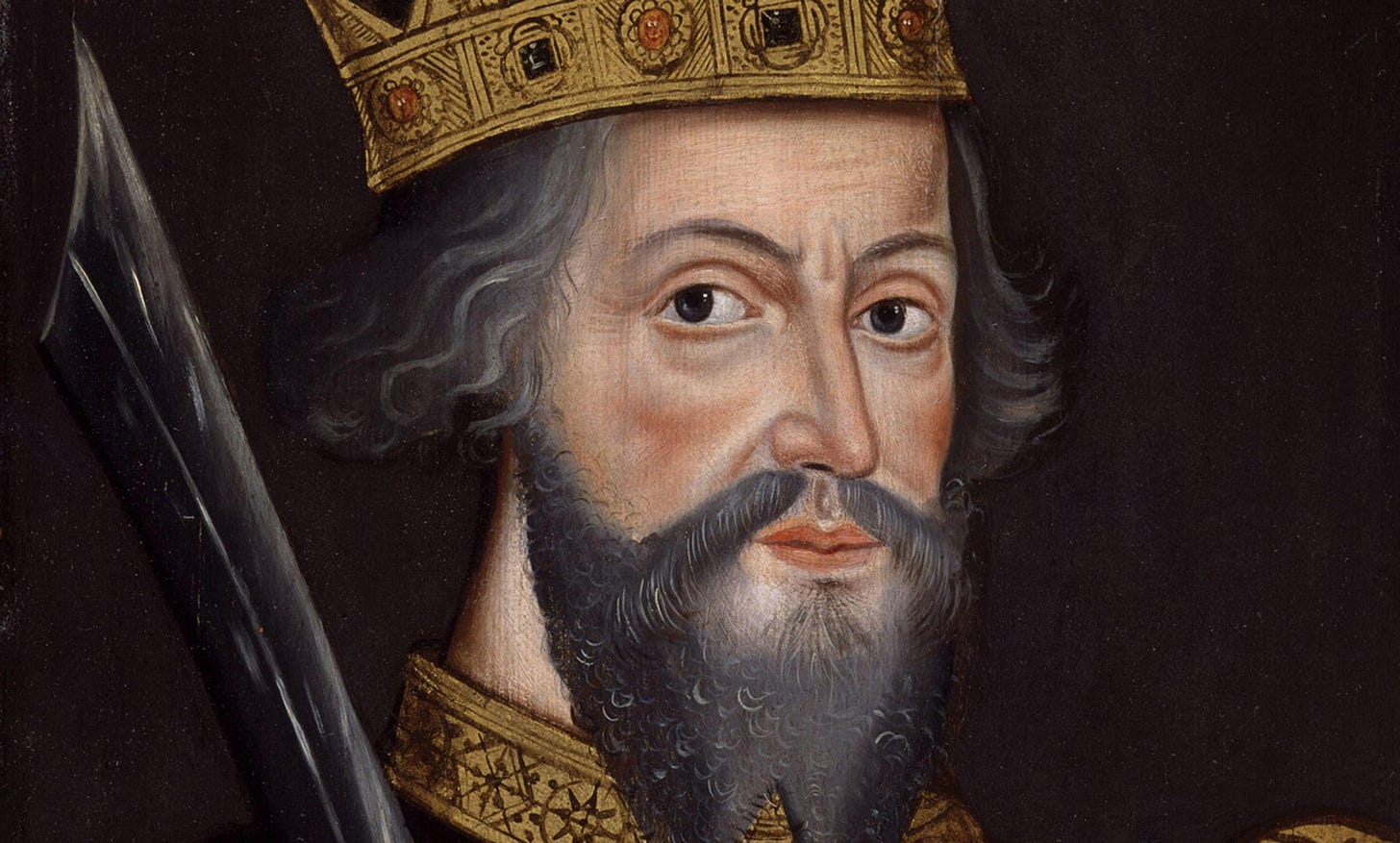A Review of Migrations: Our Family's Immigrations to America, From All Over the World
By W. F. Twyman, Jr.
[Introduction: Some lack the consciousness to observe reality. All Old Americans who self-identify as Black Americans with roots before 1900 on American soil are a cosmic mixture of many genetic heritages. In other words, it is ignorance for a Black American of old vintage to proclaim, “ain’t no white folks in my family.” A foundational Black American made this statement. It is low consciousness. It may well be the case that this consciousness is genetic. See recent discovery of a quantum biomarker for consciousness. The purpose of this essay is not to persuade the unpersuadable. The aim of this essay is to review a book which operates in a higher consciousness of universal humanity. Migrations: Our Family’s Immigrations to America, From All Over The World by my distant cousin Dr. James Edwin Smith III deserves a book review.]
We are all connected if we are Old Americans.
When I first discovered my larger world of European ancestors, I felt my sense of self in the world had changed. I wrote with a richer perspective about me. Consider the following exchange I had with another genealogist, Henry A. Walker:
Mr. Twyman:
You sent me a copy of the aforementioned document (On the Road to Oak Lawn: Truth, Reconciliation and the Twymans) just before Christmas. Previously, I sent you a congratulatory email with reference to the “grudges” piece you published in 2017.
I began reading “Oak Lawn” almost immediately but life intervened and I only finished it a day or two ago. I found your genealogical search and your attempts to bring the black and white lines of your family together fascinating and inspiring. I begin with some observations, follow that with some commentary and end with a question. I apologize in advance for the length of this email and I am grateful for your indulgence in reading this.
Observations
First, I observe that you seem to have verified connections to a specific white ancestor in the 17th century. That is relatively rare. Most impressive is verification of that key ancestor’s journey from the U. K. to the U. S. That is rare indeed. The most interesting element of your book is that you were interested enough in your Caucasian ancestors to pursue the search. As you may recall, Alex Haley paid scant attention to his white ancestors in his classic book. In scientific terms, he did not go where the evidence led him.
Second, you uncover and lay bare a common thread in this genealogical enterprise. There is tremendous resistance, on both sides, to the reality of black-white family connections. Many blacks resist tracing ancestry to slavery. Perhaps, out of misplaced shame and/or a sense of victimhood. Many whites resist admitting and/or accepting that their ancestors produced offspring of sub-Saharan African-origin.
Third, your attempt to reconnect the two sides of your heritage brings to mind two relatively recent events: (1) The desire to establish and re-cement the black and white lines is reminiscent of Edward Ball’s work (Slaves in the Family). (2) The convening of family at Oak Lawn is reminiscent of Bishop Tutu and Nelson Mandela’s Truth and Reconciliation commission although on a much smaller scale.
Commentary
1. Records of slave births are haphazard to say the least. My mother’s paternal grandfather was known to have been born in Caroline, VA circa 1840. He was mulatto and owned by a “Smith” family. He was sold at auction in Lexington, KY at approximately age 4 and eventually took the surname of his Kentucky owner (Burgin). The hamlet of Burgin, KY was named for that man a decade or more after my great grandfather—who joined the Union Army in 1864—had left KY for Missouri and parts west. Absent a bill of sale, tracing great grandfather Burgin’s origins back to VA have been futile.
On the other hand, there is gold to be mined in some public records. My father was adopted as an infant and his surname (Mercer) changed to Walker after his biological mother died and his biological father abandoned him. Luckily, the adoptive mother (the only grandmother I ever knew) knew his biological father and his family. I have been able to trace dad’s biological paternal grandfather and his grandfather’s mother to a plantation in KY.
Descendants of my great grandfather Mercer's second marriage described him as a mulatto. Again luckily, some KY counties recorded slave births for tax purposes. Records show: Child’s name, child’s color (white, black or mulatto), mother’s name and slave owner’s full name. Using that information, I followed a hunch based on a potentially unbroken male line from the white slave owner to the mulatto son of a slave woman to her grandson to the man who claimed paternity vis a vis my father. I had my Y-DNA tested. It matched white men who share the Mercer surname of my biological grandfather, great grandfather and my great great grandmother’s owner. Moreover, the overwhelming majority of those men trace their ancestry to the U. K. (Ireland and Scotland in particular). More later.
2. Resistance to acknowledging black-white miscegenation is strong. Many black Americans have not been taught nor have they studied the history of slavery. They seem to presume that the enslavement of their sub-Saharan black ancestors by brutal “white” slave owners is a singular event. Moreover, the idea that blacks and American Indians also owned black slaves is foreign to them. (Although this is anecdotal observation, compare the numbers of American blacks who claim American Indian heritage with the numbers who claim or acknowledge white ancestry.) As a result, my attempts to get my contemporary biological cousins to deal with white ancestors has been difficult for relatives on the paternal and maternal sides of my lineage. But, as you point out, resistance occurs on both sides of the color line.
I mentioned my Y-DNA above. Through ancestry.com I “found” a white woman here in the Tucson metro area who claims to be a descendant of the Kentucky family that owned my 2 X great grandmother. (It turns out that she seems not to be a direct biological descendant but is related to some who claim that ancestry.) I shared my Y-DNA results with her so that she could compare them to the profiles of her two male cousins. A week or so later she informed me—again by email—that I could not possibly be descended from the family I had identified. Her cousins’ Y-DNA did not match mine. Moreover, her cousins’ Y-DNA seemed to emanate from southern Europe rather than the U. K.!! I suppose that the idea of a NPE (non-parental event) in her cousins’ male line did not occur to her. I never tried to set a meeting with her. Perhaps, I should have in light of #3 below.
3. Your successful attempt to pull the two lines together is admirable. That is a most fascinating endeavor. I liked particularly the sort of (racial) truth and reconciliation element. It gives me some impetus to pursue the white connections further—particularly the connection in my father’s line.
A couple of ancillary comments. I am moderately versed in the behavioral genetics research but have a relatively high level of expertise with bio-psychological research on racialism. You mention both in passing. I am very skeptical of the leap from individual genetic profiles to the collective (ethnocultural) level. As an example, Herrnstein and Murray’s book, The Bell Curve, was widely excoriated for attributing intellectual inferiority to non-whites. The claim is easily rebutted by reading what they wrote. I am equally skeptical of the use of measures like the Implicit Association Test (IAT) to predict or evaluate covert “racist tendencies.”
A Question
As a third or fourth generation Kansan, I suppose I am genetically predisposed to love basketball. You wrote that there are numerically few Twymans in the U. S. Is the late Jack Twyman one of your number? As a member of the NBA Hall of Fame, Twyman is also known for his care and nurturance of Maurice Stokes his tragically paralyzed teammate on the Rochester and Cincinnati Royals (now the Sacramento Kings). Twyman also lobbied successfully for the posthumous induction of Stokes into the NBA Hall. I suspect that Stokes is the only member of any major professional hall of fame whose career spanned only 3 years.
Thanks for listening and good luck in your future genealogical endeavors.
What Migrations Does.
As Mr. Walker suggests, I have been fortunate in my truth and reconciliation efforts. My Twyman distant cousins have been nothing but supportive and curious about me and my research. Even when I was a college student lacking the tools of genetic genealogy in the early 1980s, Dr. Twyman invited me to his home at the Farmington Country Club outside of Charlottesville, Virginia. Together we spent time side by side, two Twymans of different races, searching for our most recent common ancestor. We suspected the ancestor was James Twyman (1781 - 1849) but we could not prove it. I felt a kinship with Dr. Twyman as I have with all of my distant Twyman cousins who happen to be white. Only my black Twyman cousins have been strange and uninterested, except for Rosa who was very excited to hear my podcast with the writer James Twyman. For those keeping score, James Twyman was the name of my favorite uncle, my grandfather, and the Great Emancipator of 37 slaves in 1849. The Promised Land
I have an open consciousness. I perceive divine goodness in knowing my deep family ancestry that includes all sorts of people.
On October 20, 2018, Dr. James Edwin Smith III self-published a groundbreaking work about the deepest of our family ancestry. Dr. Smith (or Cousin Jimmy) has taken courses in genetics which proved invaluable as he pursued his curiosity about Twymans to the ends of the Earth. Where did we come from? Who were our ancestors whispering to us in our Chromosomes and snps and alleles? Who were the souls who made our existence possible? Cousin Jimmy and I share this curiosity about the universe. It is a sense of awe that those long gone live on in our DNA.
The book, Migrations: Our Family’s Immigrations to America, From All Over the World, is poignant when one considers Cousin Jimmy’s birthright to bear the Twyman name. He does not due to circumstances of parentage but a Twyman he is in blood line. Jimmy begins his book with the call of pietas: “I Am All Of This And This Is All Of Me.”
Like I longed to know my Twyman ancestors as a little kid on Twyman Road, Jimmy knew the same longing for his past: “I grew up without grandparents: they had all died before I was born (or disappeared in the case of one). So, I always had questions about my forebearers: who were they and in what ways did they influence my parents? What values were passed down from my ancestors, eventually to me? And, not least of all, what did they look like? What were their personalities and demeanors?
Jimmy submitted his DNA, the DNA of his remaining siblings and 2 first cousins for testing. When the results came back, Jimmy’s sense of self expanded. His family had origins in 5 out of 7 continents! And he was my cousin!!! Jimmy and I were distant cousins, the living blood line of George Twyman I (1663 - 1703), a native of Birchington, Kent, England.
Using his knowledge and expertise in genetics and medicine, Jimmy assembled together a manuscript that would record how our genetic family came to be in America.
It appears the original Twyman joined forces with William the Conqueror as he sailed from Normandy, France to Kent, England in the year 1066. William the Conqueror defeated the English forces at the Battle of Hastings, an event that changed the medieval world. Twyman and his descendants set down roots in Kent which is why, today, the largest concentration of Twymans can be found in Kent.
The Twymans had a long history of prosperity and power, according to Jimmy in the early years but the prosperity and power declined over the generations. By 1663, a descendant, George Twyman I, left Kent as an indentured servant for the New World in Jamaica, Middlesex County, Virginia. George I apparently had some issues with his master Thomas Lee. George ran away and hid out in the Virginia forest for a month. We are all descendants of a runaway indentured servant.
Not sure how it happened but George married up into the prestigious Montague family by his union with Katherine Montague. Montague’s ancestor, Peter Montague, was the first colonial school teacher in Virginia.
Over time, the Twymans acquired tobacco plantations in Madison County, Virginia. The workforce consisted of indentured servants and slaves, both mixed-race craftsmen and African laborers. The populations mixed and mixed again over generations. As a result, the population “was mostly mulattos, quadroons, and octoroons” by the time James Twyman (1781 - 1849) inherited one of these plantations.
James Twyman is the hero of the family from the perspective of race in antebellum Virginia. The Twymans kept enslaved workers together as families. James acknowledged his mixed-race children more or less through inheritance and manumission. The Promised Land James is Cousin Jimmy’s paternal great great grandfather. Blood lines know no race.
Strong Points
Cousin Jimmy excels in his knowledge of genetics to connect our Twyman ancestors to a distant European past. For example, there is a paternal haplogroup, R-M467, which is unique to the Twyman male line. “According to 23andME, James Twyman’s paternal haplogroup (Y-DNA) is R-M467…This chromosome was passed down directly from Hugh Capet to the Twyman progenitor (these Twymans lived in the Aquitaine, France).” So, the Twymans are descended from Hugh Capet, the King of the Franks from 987 to 996. He is the founder of and first king from the House of Capet. The son of the powerful duke Hugh the Great and his wife Hedwige of Saxony, he was elected as the successor of the last Carolingian king. Louis V. Hugh was descended from Charlemagne's son Pepin of Italy through his paternal grandmother, and was also a nephew of Otto the Great.
All roads lead to Charlemagne as you will see shortly. Everyone is probably related to Charlemagne but it is uncommon for descendants of American slavery to know so. This is the valuable civic service Jimmy has provided, a sense of self connected to the larger world. One can be the genetic descendant of a slave on the Virginia tobacco plantation in the 1840s and Hugh Capet, King of the Franks, from the 980s and 990s. All praise to the quantum knowledge of genetic genealogy.
We are all connected, particularly if one has ancestors who called Virginia home in the 1600s and 1700s.
One of the reasons I recoil from a reparations discount is the notion that we are freeze framing in time one’s social status. Why would the reparations lady offer my Cousin Jimmy, a distinguished retired doctor living in paradise/smile, a reparations discount out of pity and dehumanization as if he is a stand in for long dead slave ancestors? It is so important that we enable people to see themselves in the richness of their full, rich genetic ancestry. I digress, although do you see how offensive a reparations discount might land with my distant cousin?
I tell you Jimmy loves himself and all of his ancestors, particularly those ancestors noble and royal. On page 205, Cousin Jimmy follows the genetic and family tree evidence where ever it leads. And man, the evidence was eye-opening for me. Part III Ancestors Noble & Royal was the strongest part of Migrations for me.
Up front and center is our Ancestor Charlemagne. As King of the Franks, Charlemagne laid the foundation for Modern Europe. Jimmy provides a chart on page 209 that provides the family tree from Charlemagne through the centuries to James Twyman (1781 - 1849) and Jimmy. Charlemagne is Jimmy’s 32x Great Grandfather. Jimmy in ancestry is part of the larger world.
We are all connected.
If one is a Twyman, one is a Montague. The Montague Family can be traced back to Normandy, France and William the Conqueror. The successful invasion of the English island led to generations of power and prosperity for the Montagues. Notably, the Griffin as a coat of arms was carried into battle towards the plain near Hastings. Centuries later, a descendant of the Montague family would use the Griffin as his seal. That descendant native to Virginia was none other than George Washington.
Once again, Jimmy doesn’t conceive of himself as a 100% descendant of American slaves. He is a descendant of the world. His blood line, his chromosomes, bear witness to Montague ancestry in his lineage. Drogo de Monte-Acuto of Normandy who fought side by side with William the Conqueror at the Battle of Hastings is Jimmy’s 25x great-grandfather.
“When reviewing all of the generations of the Montagues, some things became very apparent to me aside from the obvious fact that they were all accomplished and valuable men, who proved themselves valiantly in the King’s name generation after generation…they had a very firm sense of who they were…” p. 221
We are all connected.
“The Beauforts were a powerful and wealthy family from the start, and rose to greater power after their half-brother and uncle became King Henry IV in 1399. However, in 1406, Henry IV decided that although the Beauforts were legitimate, their genetic line could not be used to make any claim to the throne.” p. 226 Sir John Beaufort (1373 - 1410) was born at Chateau de Beaufort in Anjou, France. A descendant, Richard Beauford (1617 - 1677), immigrated to the Virginia Colony. He left Kent, England on August 1, 1635 and arrived in the colony about 2 months later. His great great grand daughter, Agatha Buford (1705 - 1744), married George Twyman II (1698 - 1733). Sir John Beaufort is Jimmy’s 17x Great Grandfather.
And the grandfather of Sir John Beaufort was Edward III Plantagenet, King of England (1312 - 1377).
Beaufort Coat of Arms
We are all connected.
Love and wisdom flows from genetic truth. We are not just passive observers of our identity. We have the power of free will, of choice, to embrace our fullness of self. It will require an open consciousness, which some may lack for genetic reasons.
I was particularly intrigued with Jimmy’s deep dive into our Viking origins. One of my friends in San Diego was surprised to discover I was part Scandinavian. How did that happen, she asked? I didn’t know but now it makes sense thanks to Jimmy’s genetic and family tree research.
One of our coolest ancestors is the Viking King Rollo The Dane (860 - 931). The 3x great grandfather of William the Conqueror and Drogo de Monte Acuto (Montague), Rollo led Viking expeditions into Scotland and Ireland. He was a fearsome force to be reckoned with. Rollo is Jimmy’s 27x great grandfather “and accounts for the Scandinavian DNA found in our family members.” p. 241
Rollo the Viking King
Cousin Jimmy follows the evidence and the evidence leads to his 27x great grandfather William the Conqueror. p. 244 Born at Falaise in Normandy, France in 1028, William was the 3x great grandson of Rollo the Viking King and the 3rd cousin of Saxon King of England, Edward the Confessor. Edward promised the throne to William when Edward died. Edward passed and the Privy Council did not keep Edward’s word with William. Harold assumed the English throne which was the ultimate in your face insult to William. Together with Drogo de Monte-Acuto (Montague), “William assembled a large fleet and set sail to England to claim his throne.” William defeated and killed Harold at the Battle of Hastings. His coronation as the King of England followed on Christmas Day 1066 in London. William the Conqueror is a direct ancestor of the Twymans.
William the Conqueror (1028 - 1087)
We are all connected if one is faithful to our genetic ancestry.
[To Be Concluded Tomorrow]









This is a little mind-bending. What? Descendants of American slaves have as much claim to Shakespeare, Chaucer, Donne, Harding, Dickens, and the aristocracy of Merry Olde England, as do I? No, probably more claim, since my English ancestors (representing 1/4 of genetic make-up, we think) were likely from lower classes than were yours. On the other hand, maybe some of that blue blood got into our stream in similar ways. What protection did housemaids and other common folk have in England of the 1100s, 1200s, 1300s, 1400s, 1500s, etc., if an aristocrat took a shine to them? Here comes the blue blood. And - oh, can fortune be this good - the miscreants who did this were not the bastards! That proud title was reserved for the children they created! Hadn't occurred to me, until now, that everyone's blood lines are bound to be supplemented in this manner. This observation is not meant to diminish the enormity that was American slavery. It's just an observation triggered by contemplating certain realities of slavery. Other streams: probably shared Viking blood, as there's a Danish connection. And a German connection. And a Czech connection from the vicinity of Prague. Those, with English, are the 4 streams we think make our Ocean. But what are the mysteries in each stream? To my knowledge, none of us have taken the DNA plunge.
I loved this comment and my apologies for taking so long to respond. Of course, many a nobleman who developed a weakness for the alluring chambermaid. And vice versa. Humans will be humans. I would wager you a candy bar that over 90% of descendants of American slaves are descendants of European royalty, at least. The bloodlines of Rollo the Viking King, William the Conqueror and Charlemagne will not be denied! Imagine if we viewed everyone through the lens of their genetic lines?
We would have to cast away narratives that make no bloodline sense. Loved your artful play with words here!